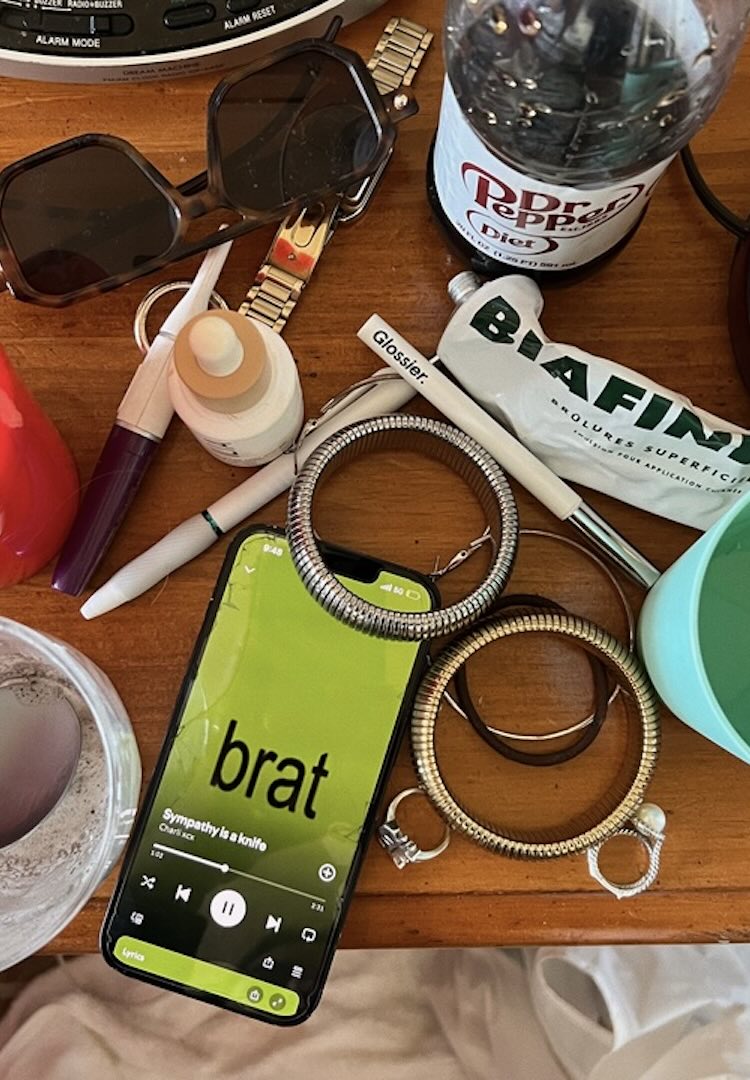Hear Me Out: Thirst traps on social media are maturing
Image via @abbiechatfield/Instagram
Words by Sarah Noonan
Vanity is taking a backseat.
The not-so-subtle art of thirst trapping is perhaps social media’s most enduring trend and one with which many of us have a love-hate relationship. Thirst traps have satisfied our need for attention and validation for many years now. But while the name remains the same, the practice of posting thirsty activity on social media is evolving.
While we still see many nods to traditional thirst traps (cue sexy, full cleavage lingerie shots) more and more people are adopting their own take on the trend, and are doing it with self-love and self-acceptance in mind, rather than the validation they will receive from others.
Looking for some similarly thought-provoking reads? Subscribe here and we’ll send them straight to your inbox.
Influencers have been spruiking self-love thirst traps for a while now, and it has become a pervasive trend. I never thought I’d be one to partake in this kind of activity on my usually curated grid of landscape snaps, but recently I’ve begun to understand the allure of a saucy Instagram post.
My need to post thirsty pics genuinely comes from a glimmer of self-appreciation, as well as a newly adopted lack of regard for others’ opinions of me. Is this now the main intention behind thirst traps in 2021, and if so, what complexities and vanities accompany this way of presenting oneself on social media?
How did the age-old thirst trap come to be?
Thirst traps have existed since the dawn of social media, entering the online scene alongside the emergence of Instagram, Snapchat and dating apps. The term ‘thirst trap’ was made official when defined by Urban Dictionary in 2011 as “any statement used to intentionally create attention or ‘thirst’”.
The definition was later fleshed out to include any provocative post that intends to entice an array of compliments, praise, or obsessive lust. As you’re probably aware, we see thirst traps most commonly in the form of disembodied torsos, exposed booties and cleavage and seductive poses.
Thirst traps are an inevitable byproduct of social media – they came about as a result of our innate need for validation as humans. We quickly took full advantage of platforms that allowed us to share and interact with others and showcase ourselves in whatever light (both literally and metaphorically) we pleased.
As creators, we carefully craft these images to satisfy both the male and female gaze. Taunting our most parched followers, thirst traps act as an ice-cold beverage to break the heat on a 40-degree day.
We trial and test different looks, taking note of the public’s reactions, and most of us are familiar with the spike in serotonin that occurs as we watch the likes and flattering comments roll in on a new post. But is this external validation really why we still thirst trap in 2021?
What is the public perception of thirst traps?
The early 2010s were a fun exploration into the arousing nature of thirst traps, but it didn’t pass without scrutiny. Many users of social media would have (and some still do) categorise thirst trapping as a sad, desperate plea for praise.
This perception can be linked to the idea that those who actively seek validation in a public domain (so essentially the majority of us) are less worthy of this affirmation. This is where desirability politics come into play.
According to Everyday Feminist, this debate highlights how the stance on thirst trapping as anti-feminist is rooted in the belief that people should value humility over self-confidence.
But this concept no longer holds true now that humans’ social lives have extended to the online world. Our need to be desired and our need to belong is only heightened on social media. As a result, thirst trapping elicits a certain kind of superficial self-pleasure, bolstering our confidence and self-esteem. But if we truly believe that thirst traps are pathetic pleas for recognition, why are we still making and consuming them?
What is this new and improved way of thirst trapping?
While the images themselves remain much the same, the underlying intention behind thirst traps in recent times has undergone an obvious shift. It still does come down to our need for validation, but this validation no longer rests in other people’s approval of our physical appearance, but within the realm of self-love.
Instagram’s recent change that allows likes and comments to be switched off is yet another nod to the fact that external validation is losing its relevance in our online environments. If I were to go ahead and post a thirst trap this week, it would simply come down to how I feel about myself, not how I envision others will perceive me.
Lillian Ahenkan (AKA Flex Mami), co-host of the popular culture podcast, Bobo and Flex, recently discussed this notion of validation in relation to the rise of “self-love culture” on social media. “I can definitely understand why [our] self-love journey has been cooked if [we’re] just trying to take [ourselves] at face value… How [we choose] to improve [ourselves] aligns with the way that society also wants [us] to improve. So society says… we like people who are perceived to be valuable, we like people who add value.”
But despite the difficulties the self-love journey can present, we are seeing a new style of thirst trap cropping up on social media that focuses on self-appreciation and body positivity rather than stereotypical physical attractiveness. Australian influencers including Kath Ebbs, Jadé Tuncdoruk, and feminist icon Abbie Chatfield (who pioneered thirst traps with a message) are only a few examples of this change.
But this is not to say that the need for validation and the pressure to look a certain way has simply gone out the window. The majority of our activity on social media is propelled by our underlying desire for acceptance. How we present and express ourselves online, whether that be in the form of a thirst trap for physical admiration or a thirst trap for mental positivity, helps bolster our self-esteem.
The difference is that many of us now thirst trap with our own validation and acceptance at the forefront of our minds, and if our saucy posts garner likes and comments from others, well, that’s just the icing on the cake.
If you’re struggling with body image issues or eating disorders, you can call the Butterfly National Helpline at 1800 33 4673 for free and confidential support, or email or chat to them online here.













